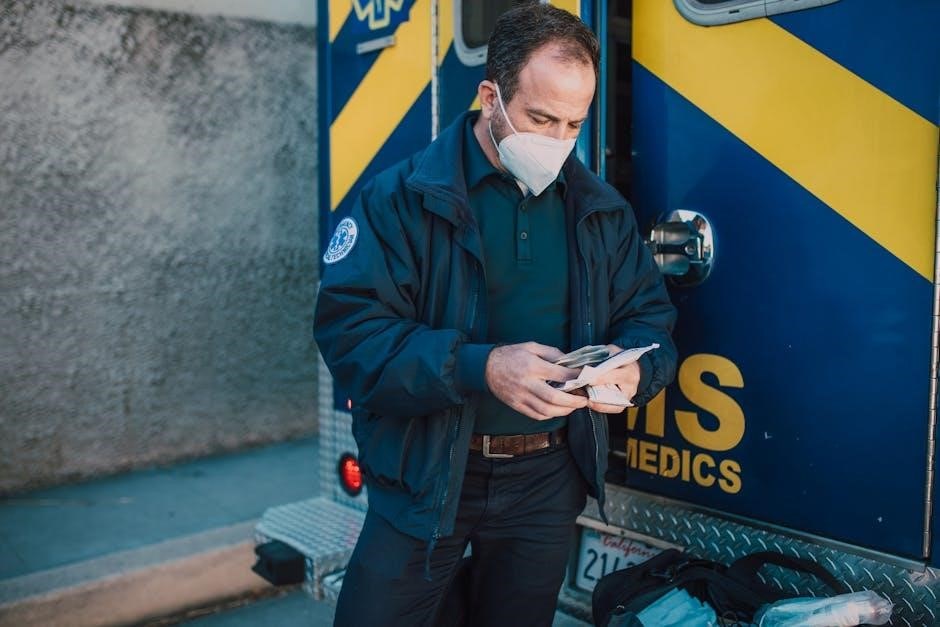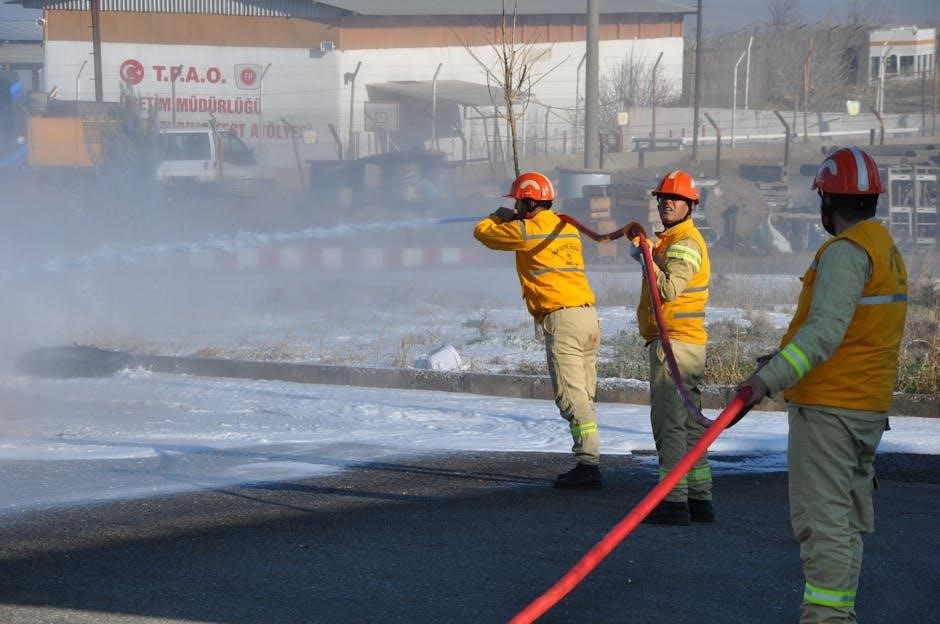
Liz Lerman’s Critical Response Process (CRP) offers a structured method for constructive feedback on creative works, emphasizing meaningful observations, questioning, and thoughtful dialogue to foster growth and collaboration across disciplines.

Background and Development of the Critical Response Process
Developed by Liz Lerman and John Borstel, the CRP emerged as a collaborative tool to refine feedback practices in artistic settings, first detailed in their 2003 guide.
Liz Lerman’s Philosophy on Constructive Feedback
Liz Lerman’s philosophy centers on fostering meaningful dialogue over criticism, emphasizing collaboration and growth. She believes feedback should prioritize understanding and curiosity, rather than judgment or defense. By focusing on what resonates emotionally or intellectually, her approach encourages artists to explore their work deeply without fear of negative criticism. Lerman advocates for a shift from prescriptive advice to open-ended questioning, allowing creators to clarify their intentions and refine their work. This philosophy underpins the Critical Response Process, creating a supportive environment where feedback becomes a tool for growth rather than a source of tension. Her method has been widely adopted across artistic disciplines, highlighting the value of constructive engagement in the creative process.
Evolution of the Critical Response Process Over Time
The Critical Response Process (CRP) has evolved significantly since its inception, adapting to diverse artistic fields and everyday applications. Initially developed by Liz Lerman for dance, it expanded into theater, visual arts, and beyond. Over time, the process became more structured, emphasizing clear roles and steps to ensure constructive dialogue. Lerman and John Borstel formalized the method in their 2003 guide, making it accessible to a broader audience. Today, CRP is used globally, with facilitators applying it to various creative and non-arts contexts. Its flexibility and focus on meaningful engagement have allowed it to remain relevant, fostering collaboration and growth across disciplines. This evolution reflects the enduring value of Lerman’s approach in nurturing creativity and improving works-in-progress through thoughtful feedback.

The Four-Step Critical Response Process
Liz Lerman’s Critical Response Process involves four structured steps: sharing meaningful observations, the artist posing questions, responders asking neutral questions, and finally, responders offering thoughtful opinions to guide refinement.
Step 1: Sharing Meaningful Observations
Step 1 of Liz Lerman’s Critical Response Process focuses on responders sharing meaningful observations about the work. This step encourages participants to express what resonates with them, avoiding general praise or criticism. Instead, they highlight specific elements that stand out, such as moments, themes, or details that evoked emotion or curiosity. The facilitator ensures the discussion remains focused and constructive. By starting with observations rooted in personal experience, the process fosters a supportive environment, allowing the artist to feel heard and understood before moving into deeper dialogue. This step lays the groundwork for the artist to clarify their intentions and engage with feedback in a meaningful way, ensuring the conversation remains centered on the work’s impact and significance.
Step 2: The Artist as Questioner
Step 2 of Liz Lerman’s Critical Response Process empowers the artist to take an active role by posing questions about their work. This step shifts the focus from responders’ observations to the artist’s curiosity, allowing them to seek clarity on specific aspects of their work. The artist might ask questions like, “What did you see that resonated with you?” or “How did you interpret this particular element?” This phase encourages the artist to explore their intentions, challenges, and goals, fostering a deeper understanding of their creative process. By framing their own questions, the artist guides the conversation, ensuring the feedback remains relevant and actionable. This step also helps the artist refine their ideas and gain new insights, transforming the critique into a collaborative exploration rather than a defensive exchange.
Step 3: Responders Asking Neutral Questions
Step 3 of Liz Lerman’s Critical Response Process involves responders posing neutral, open-ended questions to the artist; These questions are designed to clarify the artist’s intentions, explore the work’s elements, and uncover potential interpretations without imposing personal opinions. For example, responders might ask, “What inspired this particular choice?” or “How did you envision the audience experiencing this piece?” This step ensures that the dialogue remains focused on understanding the work rather than critique. By asking neutral questions, responders help the artist reflect on their process and identify areas for further exploration. This phase fosters a safe and collaborative environment, encouraging the artist to think deeply about their work while maintaining creative control. Neutral questioning also prevents responders from projecting their own biases, keeping the feedback constructive and centered on the artist’s goals.
Step 4: Sharing Opinions and Final Thoughts
In Step 4 of Liz Lerman’s Critical Response Process, responders share their opinions and final thoughts about the work. This step is optional and occurs only if the artist requests it, ensuring the artist retains control over the feedback process. Responders are encouraged to frame their opinions as suggestions rather than directives, focusing on how the work could evolve without imposing their own vision. The facilitator ensures that the dialogue remains respectful and constructive, preventing criticism from becoming overwhelming or unproductive. This step allows responders to offer insights that might inspire the artist, while the artist can choose what resonates most. The process concludes with a clear understanding that the artist is free to embrace or discard the feedback, maintaining their creative autonomy throughout;

Benefits of the Critical Response Process
The Critical Response Process fosters collaboration, encourages critical thinking, and promotes constructive dialogue, helping artists refine their work while maintaining creative control and confidence in their vision.
Fostering Constructive Dialogue and Collaboration
The Critical Response Process excels at fostering constructive dialogue and collaboration by engaging artists, peers, and audiences in a structured, respectful exchange. It ensures that feedback is accurate and unbiased, promoting an environment where critical thinking and creativity thrive. By encouraging open communication and shared understanding, the process strengthens relationships and builds trust among participants. This collaborative approach not only enhances the quality of artistic work but also empowers individuals to contribute meaningfully to the creative process. Its versatility allows it to be applied across various disciplines, making it a valuable tool for fostering teamwork and innovation in both artistic and non-artistic contexts.
Encouraging Critical Thinking and Growth
Liz Lerman’s Critical Response Process (CRP) is designed to encourage critical thinking and growth by fostering a deeper understanding of artistic work. It prompts artists to reflect on their creations and responders to engage thoughtfully, ensuring feedback is both constructive and meaningful. By emphasizing neutral questioning and open dialogue, the process helps artists refine their work without becoming defensive. This approach not only enhances the quality of the artwork but also cultivates a mindset of continuous improvement. The CRP’s focus on clarity and specificity encourages participants to think analytically, fostering a culture of growth and development. It supports artists in refining their vision while maintaining creative integrity, making it a powerful tool for both personal and professional advancement.

Applying the Critical Response Process in Various Fields
Liz Lerman’s CRP is widely adaptable, enhancing feedback processes in dance, theater, visual arts, and beyond, fostering collaboration and growth in both creative and non-arts disciplines effectively.
Applications in Dance and Performance Art
Liz Lerman’s Critical Response Process has been widely embraced in dance and performance art as a transformative tool for fostering constructive dialogue. It creates a safe space for choreographers and performers to receive meaningful feedback on works-in-progress. By focusing on observations, questions, and neutral inquiry, the process helps artists refine their vision while maintaining creative integrity. CRP has been particularly influential in improvisational dance, where it encourages deeper exploration of movement and narrative. Its structured approach ensures that feedback is both specific and respectful, allowing artists to grow without feeling defensive. This method has also been used in post-performance discussions, enabling audiences to engage more deeply with the work. As a result, CRP has become an essential component of dance education and professional development, bridging the gap between creation and critique. Its impact continues to inspire innovation in the field.
Using the Process in Theater and Visual Arts
Liz Lerman’s Critical Response Process has proven invaluable in theater and visual arts, fostering a collaborative environment for artists to refine their work. Directors and playwrights use the process to gather insights on scripts, performances, and staging, ensuring feedback is constructive and focused. Visual artists benefit from the structured dialogue, which helps them interpret audience reactions and refine their creative vision. The process encourages open communication, allowing artists to clarify their intentions while responders provide thoughtful observations. This method is particularly effective in theater rehearsals and visual art exhibitions, where it helps maintain the artist’s vision while incorporating audience perspectives. By emphasizing meaningful engagement, CRP has become a cornerstone for creative growth in these disciplines, enabling artists to evolve their work with confidence and clarity.
Adaptations for Non-Arts Fields and Everyday Use
Liz Lerman’s Critical Response Process (CRP) has been adapted beyond the arts, proving its versatility in fostering constructive dialogue in various professional and everyday contexts. In business, CRP can enhance brainstorming sessions and project reviews by encouraging thoughtful feedback and collaboration. Educators use the process to improve student work critiques, promoting growth and understanding. In personal relationships, CRP can transform conflicts into opportunities for deeper understanding by structuring conversations around observations and questions. Its step-by-step approach ensures that feedback remains focused and actionable, making it a valuable tool for any setting requiring open and productive communication. This adaptability highlights CRP’s universal relevance, demonstrating how its principles can enrich dialogue and collaboration across diverse fields and daily interactions.